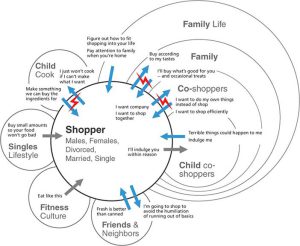What are the ethical considerations in Contextual Design?
Contextual Design
The development of new products is a complex process with many different dimensions of ethical concern. Design researchers, developers and manufacturers are confronted by a web of means and ends that complicates the activity of designing. The ethical concerns range from ensuring that the products they create are safe and reliable, conform to laws and regulatory codes, and contribute to the health of society.
A central concern is determining the purpose of design. Some view it as the art of creating what does not exist, while others see it as a science that seeks to change existing situations into preferred ones. Whatever one’s perspective, most designers agree that design is a systematic discipline involving choices that are aimed at changing existing situations into desired ones.

While the natural and social sciences study what already exists, design is concerned with invention and innovation and with matters that may be other than they are through human action (Simon 1981). The ethical implications of this distinction are numerous and complex.
What are the ethical considerations in Contextual Design?
For example, one of the central principles of Contextual Design is that the best design data comes from direct observations and interviews with users in their own work environments – their natural contexts – to learn what they do and why they do it. This approach leverages the earlier work of ethnographic methods but extends it in important ways.
In addition to providing rich, qualitative user data, the contextual-inquiry process is also designed to allow teams to come together, share the data and discuss its meaning and implications. Teams can then use the consolidated data to identify opportunities for using technology to transform and improve work practice.
During this phase of the Contextual Design process, it is important that the team remain aware of its responsibility to protect and respect the participants and their right to autonomy. Inappropriate actions by the team can have significant consequences for both individual users and the wider community.
Another key ethical consideration is that of the impact of the design on people’s lives. A central tenet of contextual equipoise is that a product’s functionality should not exceed its impact on the people who use it.
This principle can be applied to all aspects of the design process, but is particularly relevant in the later stages. It is at this point that a design project starts to diverge from its original aims. It is at this stage that the design team must make difficult tradeoffs between the functionality of a product and the impact it will have on the users who will be its primary customers. This is where the importance of a good, clear definition of the concept of contextual equipoise comes to the fore. It is the only way to ensure that a team’s decisions are informed by the real-world impact they will have on people’s lives. This is essential if the design process is to be viewed as ethical and moral.








